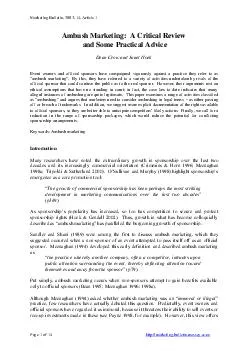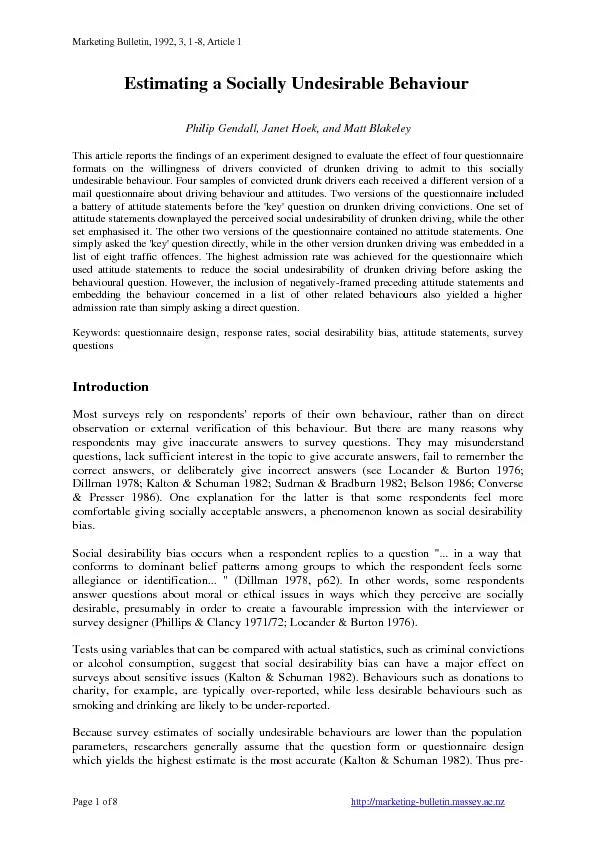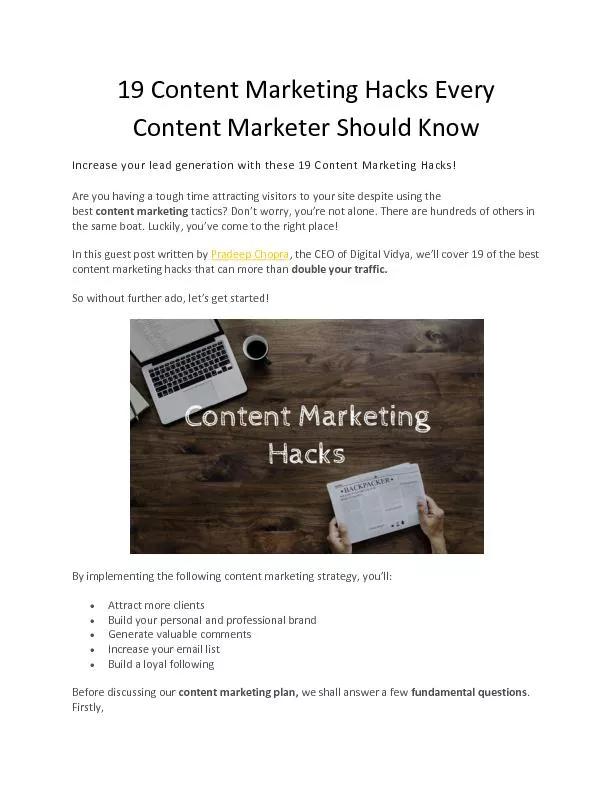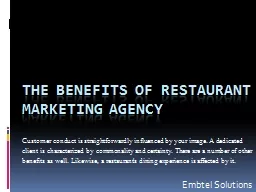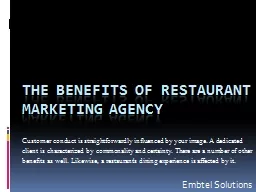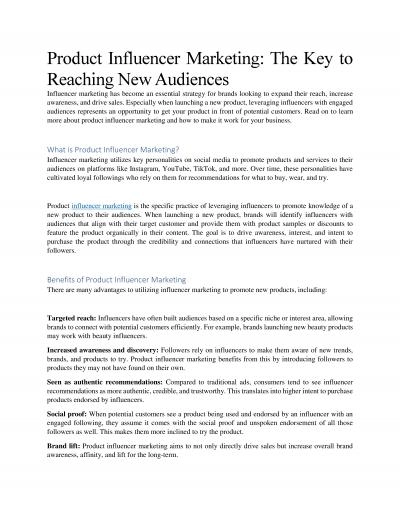PDF-Marketing Bulletin Article Page of http marketing bulletin
Author : marina-yarberry | Published Date : 2015-02-01
masseyacnz Ambush Marketing A Critical Review and Some Practical Advice Dean Crow and Janet Hoek Event owners and official sponsors have campaigned vigorously against
Presentation Embed Code
Download Presentation
Download Presentation The PPT/PDF document "Marketing Bulletin Article Page of ht..." is the property of its rightful owner. Permission is granted to download and print the materials on this website for personal, non-commercial use only, and to display it on your personal computer provided you do not modify the materials and that you retain all copyright notices contained in the materials. By downloading content from our website, you accept the terms of this agreement.
Marketing Bulletin Article Page of http marketing bulletin: Transcript
Download Rules Of Document
"Marketing Bulletin Article Page of http marketing bulletin"The content belongs to its owner. You may download and print it for personal use, without modification, and keep all copyright notices. By downloading, you agree to these terms.
Related Documents

